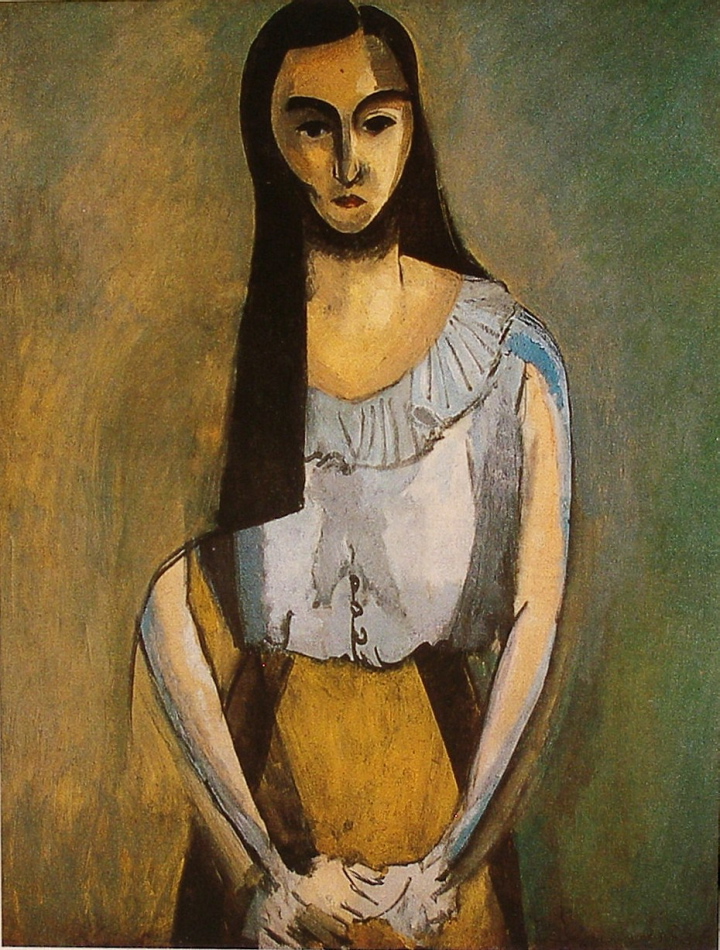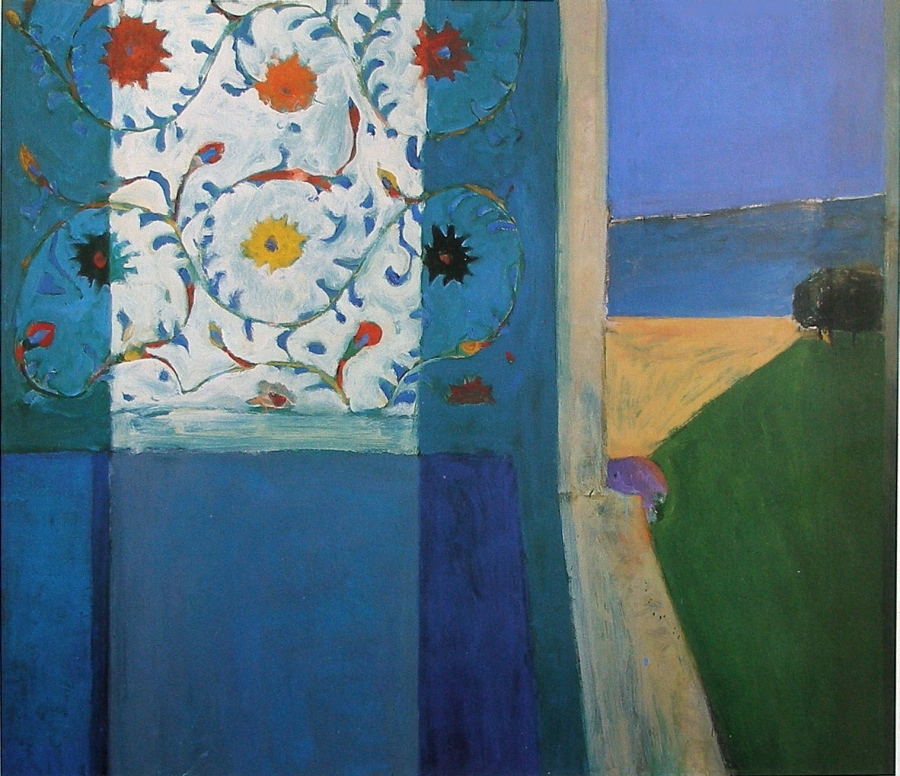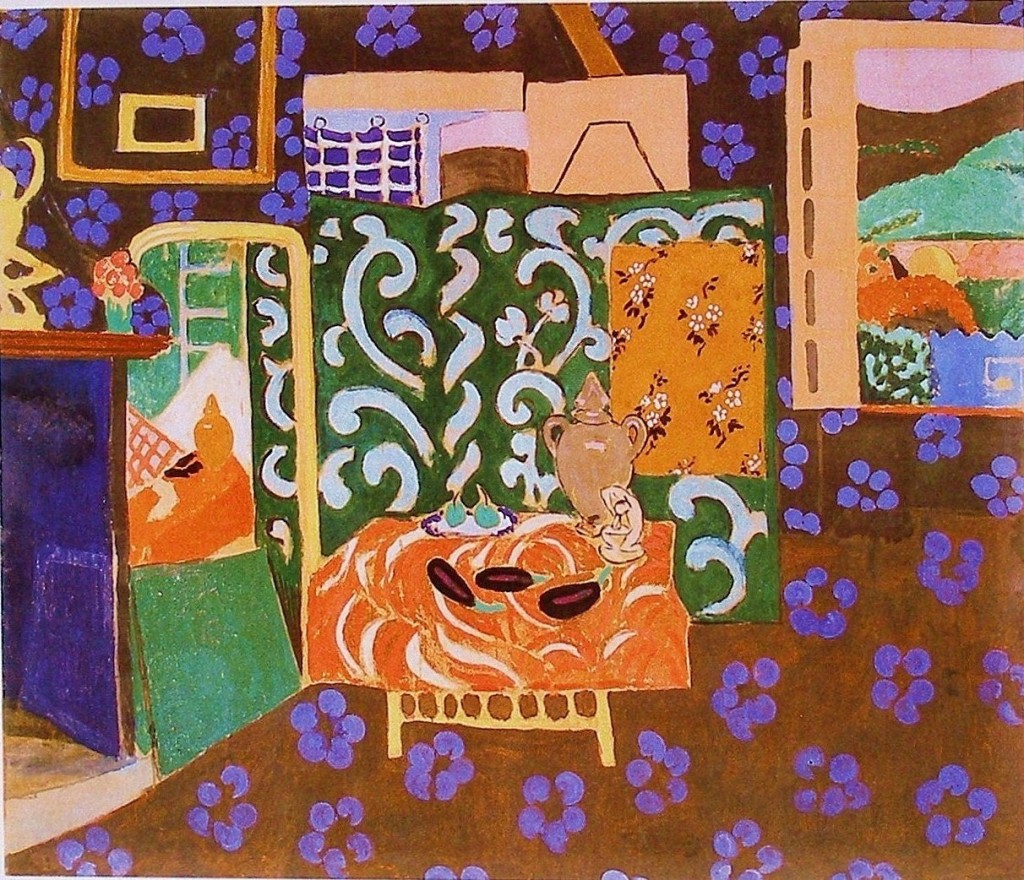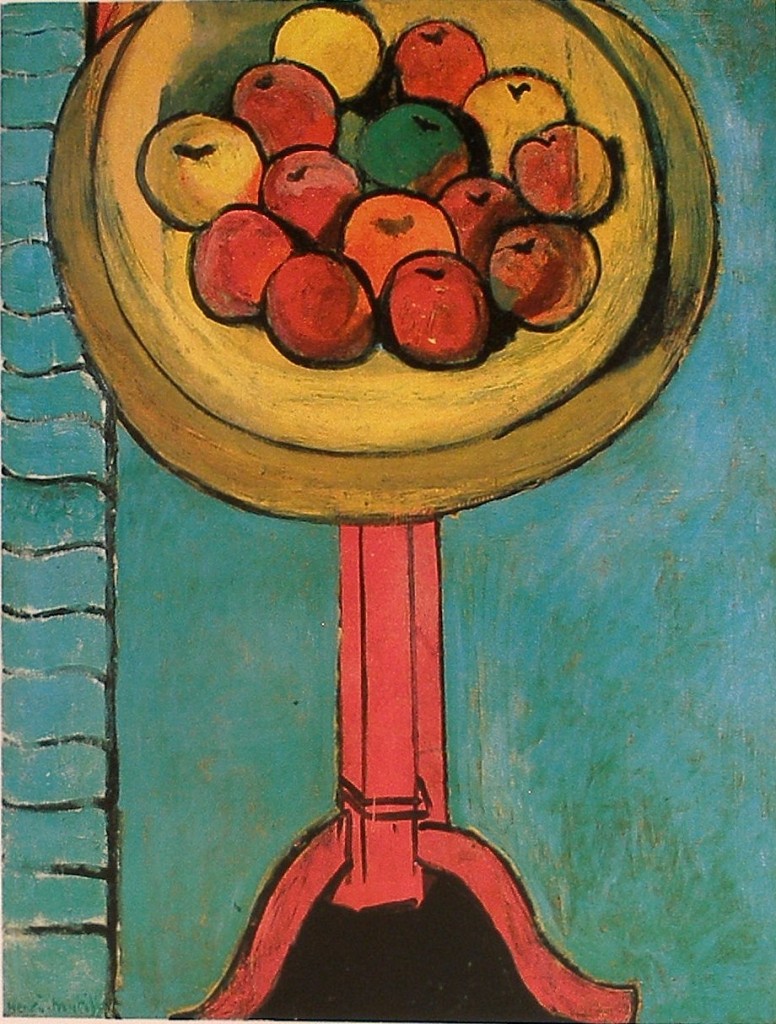This is a fascinating study of conveying spatial planes, or another way of putting it, immersing the subject into the surrounding space. How to accomplish this on a two dimensional surface is the challenge. And interestingly, this can only be attempted on a flat plane.
Matisse engaged with this by actually painting an almost opaque plane in front or the figure, which integrates with her hair. What I like is how boldly he conveyed the consideration. It could be said he may have pushed it to the point of substance rather than space. Art should always be open for discussion, as there is no right or wrong in art!
Another impressive consideration is how he painted her hands and arms. They are not static! She is not a frozen in time and Matisse was engaging in the wonderful challenges presented by Cezanne.




